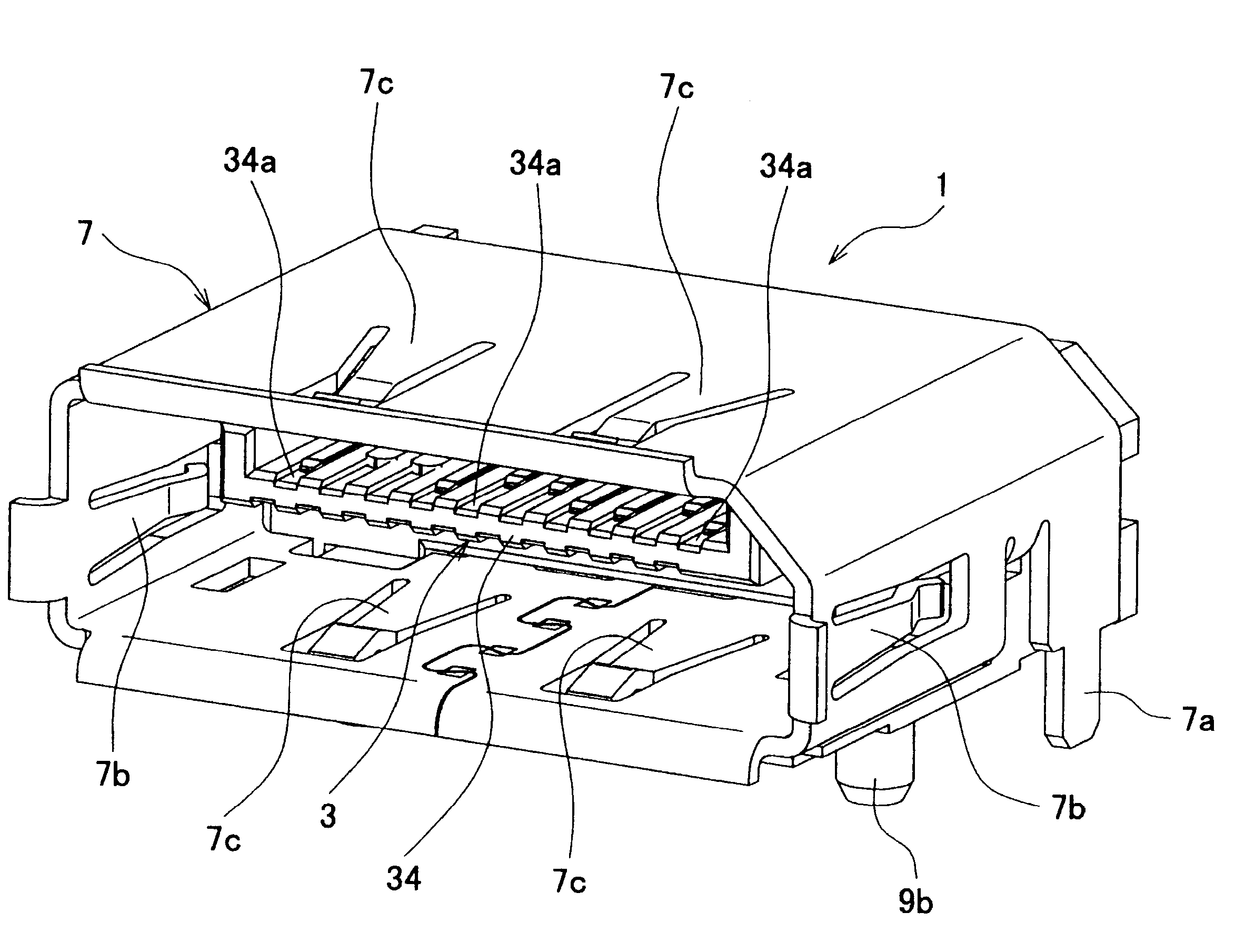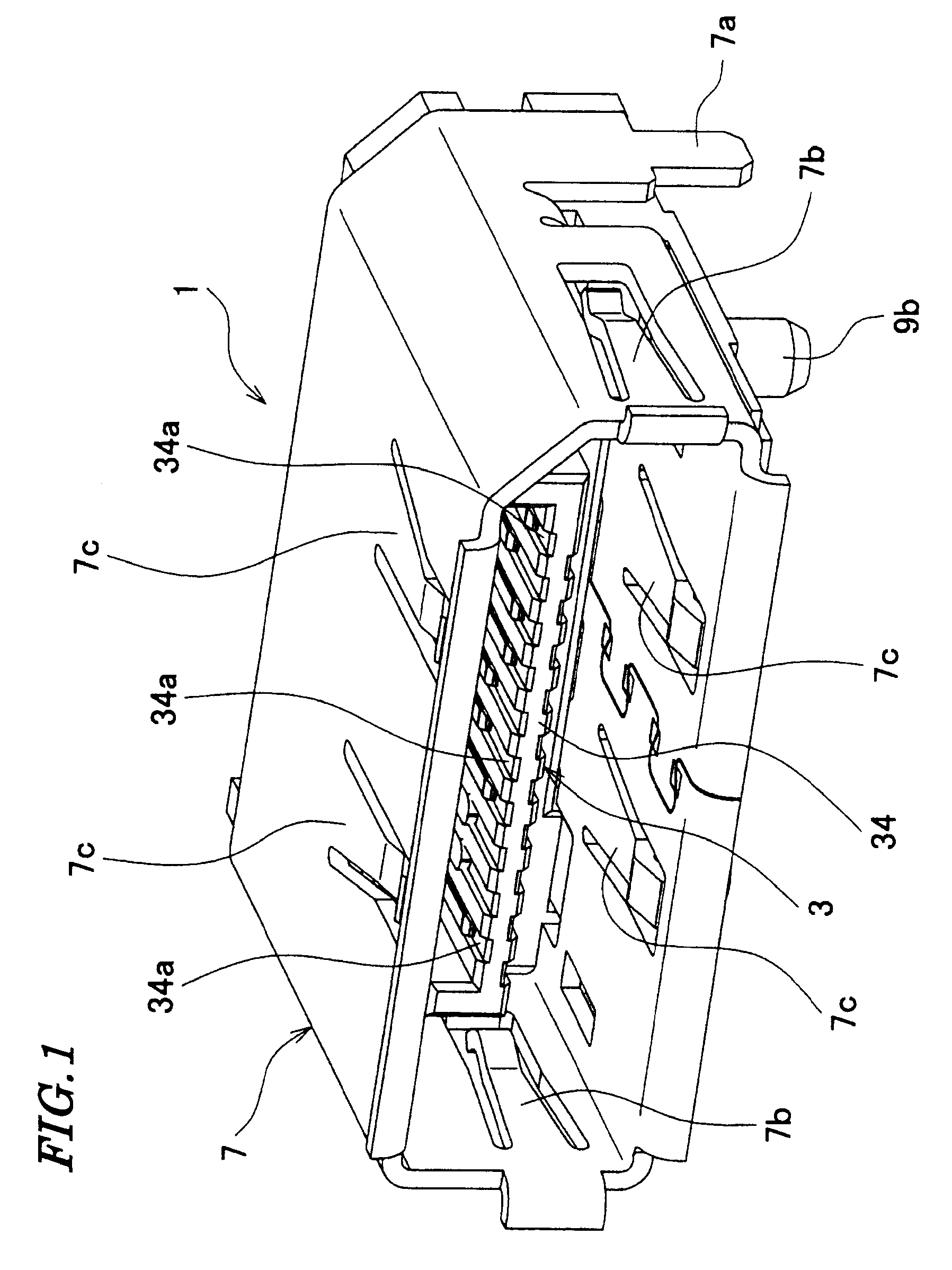Connector
a technology of connecting rods and shielding devices, applied in the direction of coupling device connections, coupling protective earth/shielding arrangements, electric discharge lamps, etc., can solve the problems of difficult liable to occur crosstalk, and achieve the effect of suppressing crosstalk and easy to carry out impedance matching
- Summary
- Abstract
- Description
- Claims
- Application Information
AI Technical Summary
Benefits of technology
Problems solved by technology
Method used
Image
Examples
first embodiment
[0032]Referring to FIGS. 1 and 2, a connector 1 according to the present invention is comprised of a housing 3, a plurality of pairs of signal contacts 5 (see FIGS. 6 and 7), ground contacts 6 (see FIGS. 2 and 3), and a locator 9.
[0033]The housing 3 is made of e.g. resin. As shown in FIGS. 2 to 4, the housing 3 includes a bottom board portion 31, a rear wall portion 32, and a holding portion 34. The upper and lower sides of the connector 1 as viewed in FIG. 4 are the front and rear of the same, respectively, and the left and right sides of the connector 1 as viewed in FIG. 5 are the front and rear of the same, respectively. The bottom board portion 31 is plate-shaped. The rear wall portion 32 is continuous with a rear portion of the bottom board portion 31. The rear wall portion 32 is formed with a plurality of through holes (not shown) therein at predetermined spaced intervals. The through holes are communicated with grooves 34a, referred to hereinafter, of the holding portion 34. ...
second embodiment
[0050]Next, a description will be given of a connector according to the present invention with reference to FIG. 10.
[0051]Component parts identical to those of the connector according to the first embodiment are designated by identical reference numerals, and detailed description thereof is omitted, while only essential component parts different in construction from those of the first embodiment will be described hereinafter.
[0052]In the second embodiment, the first terminal portion groups T1 and the second terminal portion groups T2 are arranged along the arranging direction A in an alternating manner, the first and second terminal portions 51d and 52d of the first terminal portion groups T1 and the terminal portions 62d of the second terminal portion groups T2 are arranged in substantially the same straight line, and the first and second terminal portions 51d′ and 52d′ of the second terminal portion groups T2 and the terminal portions 61d of the first terminal portion groups T1 ar...
PUM
 Login to View More
Login to View More Abstract
Description
Claims
Application Information
 Login to View More
Login to View More - R&D
- Intellectual Property
- Life Sciences
- Materials
- Tech Scout
- Unparalleled Data Quality
- Higher Quality Content
- 60% Fewer Hallucinations
Browse by: Latest US Patents, China's latest patents, Technical Efficacy Thesaurus, Application Domain, Technology Topic, Popular Technical Reports.
© 2025 PatSnap. All rights reserved.Legal|Privacy policy|Modern Slavery Act Transparency Statement|Sitemap|About US| Contact US: help@patsnap.com



